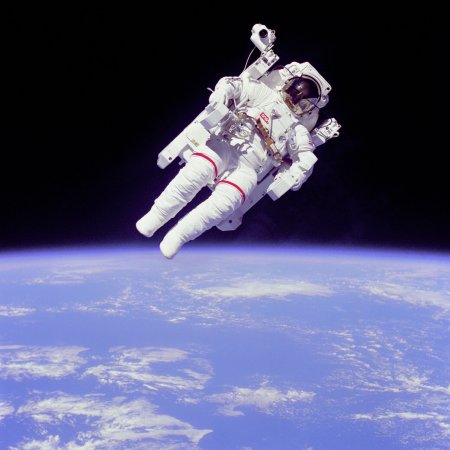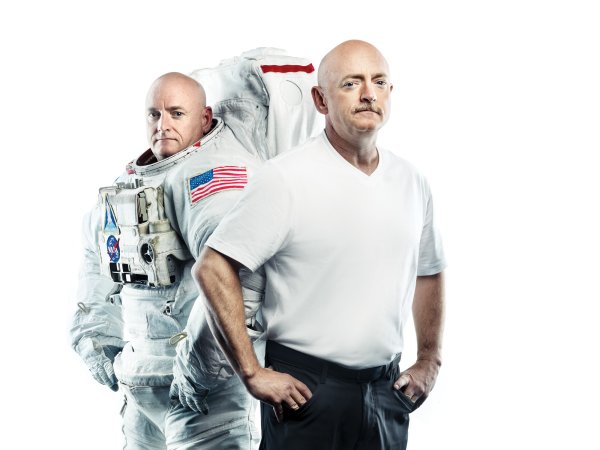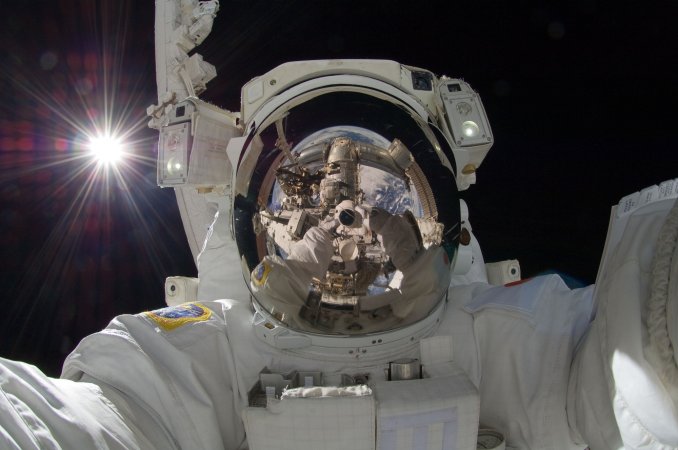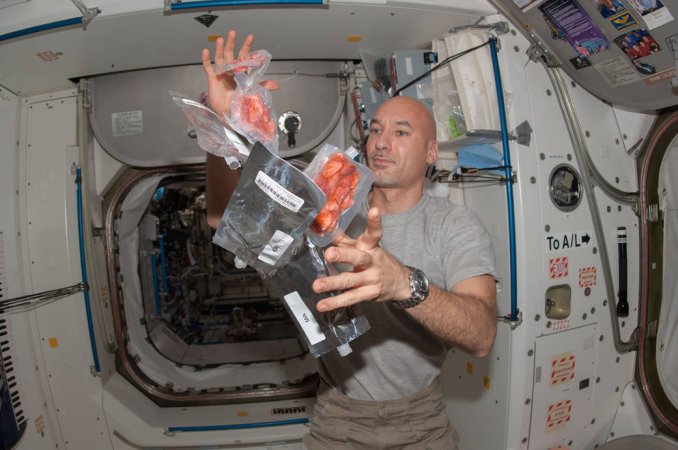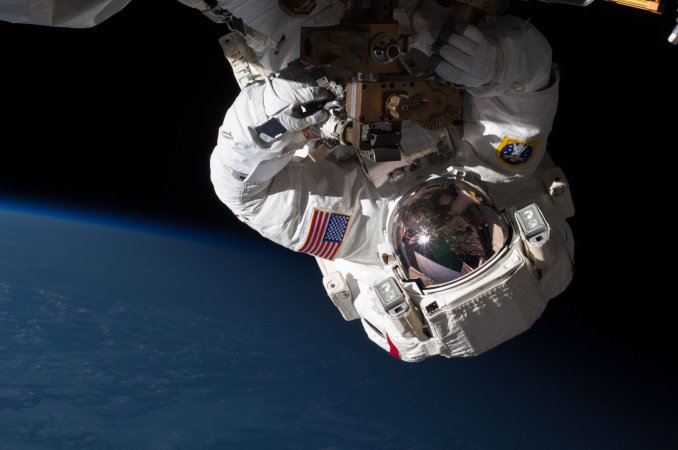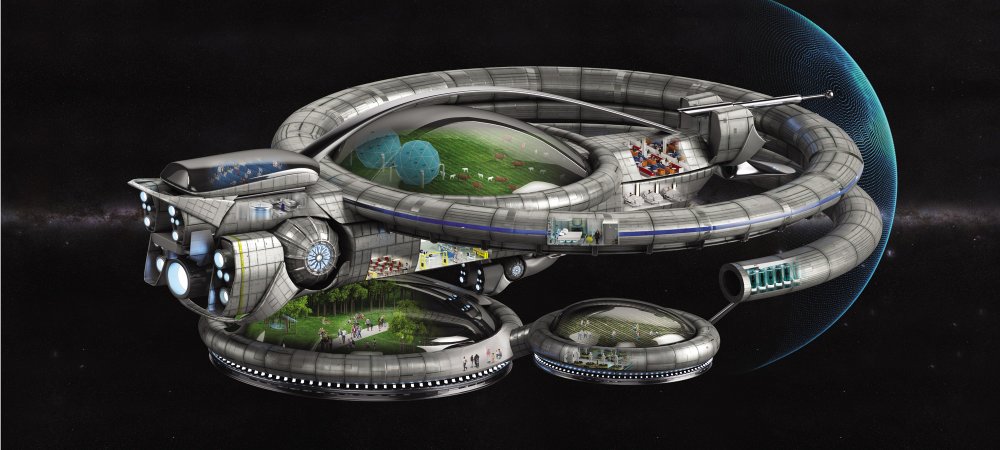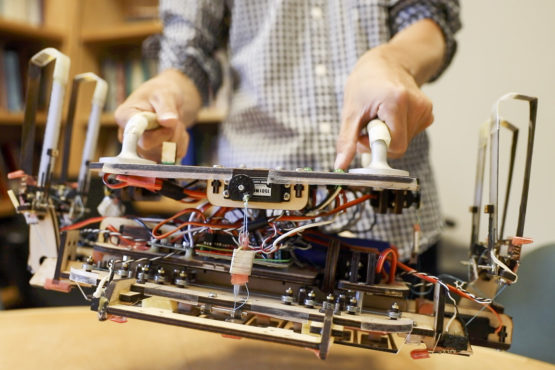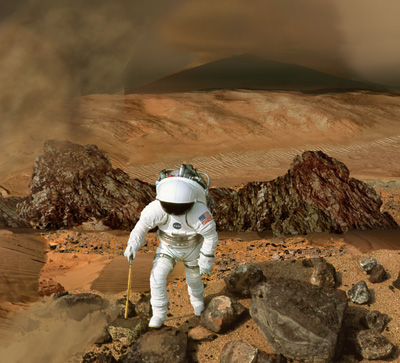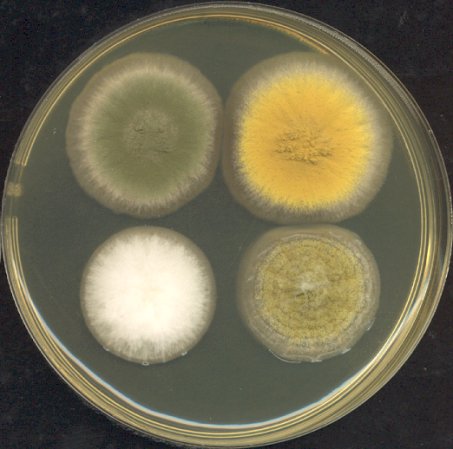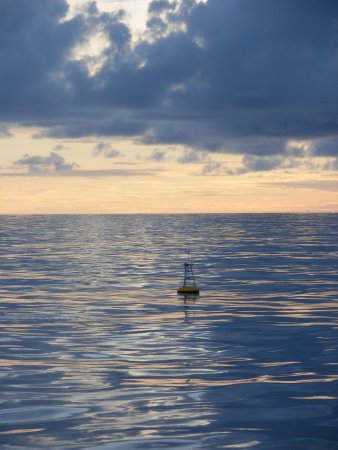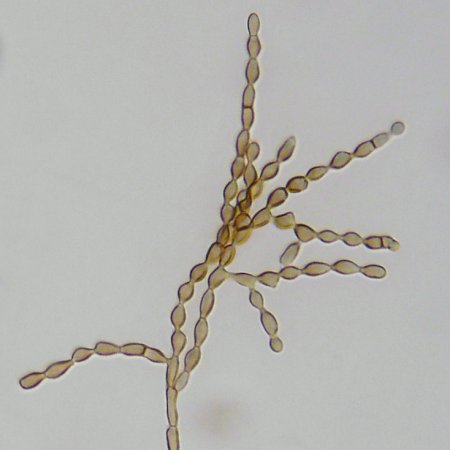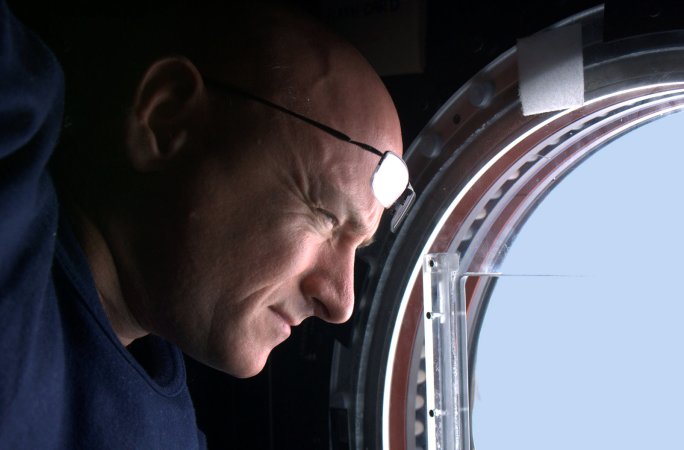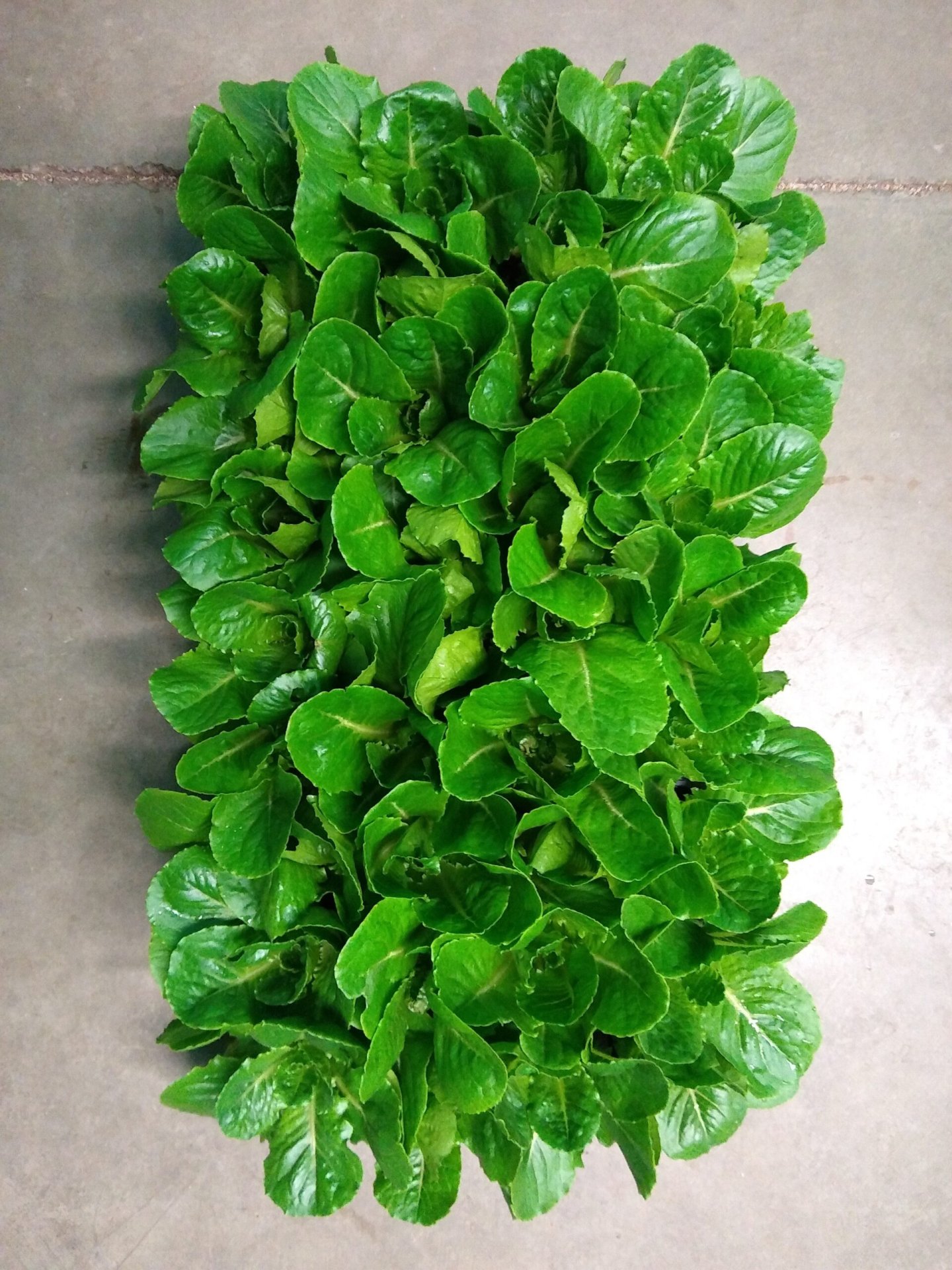

Future astronauts may be able to grow certain medicines in space, rather than pack those drugs, based on new research presented Tuesday.
A research group grew lettuce that produces a protein used to treat loss of bone density—a key health issue for astronauts living in microgravity for long periods.
“Plants have a number of advantages” over the other possible ways of making drugs offworld, says Kevin Yates, a chemical engineering PhD candidate at the University of California, Davis who presented the research at the American Chemical Society’s Spring 2022 meeting. His research is part of NASA’s Center for the Utilization of Biological Engineering in Space (CUBES), which is all about using plants and microbes to make resources on the fly during space exploration.
Making these kinds of drugs on Earth is already complicated. Drug makers can chemically synthesize proteins, but the process is inefficient as well as complicated and expensive, Yates says–not plausible to do in space. For this reason, current mission plans call for astronauts to carry all the drugs they need. Several other proposals include using a bioreactor, a kind of tank where microbes consume nutrients and turn them into a desired product, to create useful proteins on a space station. But these reactors can require fine-tuned conditions, and they are much harder to maintain than the average garden plant.
With a plant that’s been genetically modified to produce the desired drug, things are simpler. “You literally just grow the plant,” then harvest it, Yates says.
Similar projects could work with other plants, but Yates says lettuce is a good starting point because green-thumbed astronauts have already grown plenty of it in space, inside the International Space Station’s tiny garden. A meal of fresh lettuce can also benefit astronauts who are typically stuck eating dehydrated, pre-packaged food.
Making supplies during a mission could cut costs and avoid radiation damage. The cost of sending along supplies for astronauts, especially on longer expeditions such as Mars missions, is enormous. On top of that, there’s the issue that “pharmaceuticals can degrade in space” due to radiation, Yates says.
A Mars mission would run roughly three years, including eight months of traveling each way to the planet. Even sending Martian supply drops ahead of time risks exposing supplies to years of damaging radiation, possibly preventing medicine from working.
[Related: NASA has big plans for space farms]
Yates’s goal is to produce a protein to combat human bone loss using only lettuce. The protein, called parathyroid hormone, naturally occurs in humans. It’s used to stimulate bone growth to counteract the loss of bone mineral density—osteoporosis—here on Earth. A drug named Forteo, a synthetic look-alike of the parathyroid hormone, has been approved by the Food and Drug Administration to treat this disease. The lettuce produces a similar protein to Forteo, which is typically administered with injections.
Yates is growing different lines of the plants and selecting the ones that produce the most protein to maximize its yield. Based on the amount it produces now, the lettuce would have to be ground up and purified to administer enough of the drug. But it’s possible with future versions of the project “you may be able to simply eat the plant,” he says. The hormone has been genetically tailored to be easier for humans to absorb, but Yates still needs to make sure it’s completely safe before trying to feed it to people.
“I think it’s a brilliant concept,” says Susan Bloomfield, a physiologist at Texas A&M University who has studied the effects of microgravity on bone density and isn’t involved with the lettuce project. Getting an oral drug past an acidic stomach is “the key challenge for any medication,” Bloomfield says, and one that an edible approach will have to overcome.
With more research, it’s possible that researchers will find an easier way to administer the hormone and still get its benefits, Yates says.

Our bodies constantly deposit new bone matter to repair and build bones, while bone matter is also being reabsorbed back into our blood. But in space, microgravity disrupts this balance. Most middle-aged adults quickly lose bone density in microgravity, Bloomfield says. Although exercise, vitamin D supplements, and good nutrition slow this process significantly, she says, bone loss is inevitable no matter how much iron the astronauts pump daily.
The parathyroid hormone helps bones rebuild faster, though it doesn’t directly prevent bone loss. Bone formation slows in microgravity, but the increased speed of bone loss is the bigger issue, Broomfield says, so future research will need to figure out how much parathyroid hormone can help during microgravity stints.
Yates says this technology wouldn’t just be useful in space. It could also lead to better, cheaper ways to produce drugs on Earth, especially in lower-resource areas. The company Medicago, for instance, is already growing COVID-19 vaccine material in plants.
The next steps for Yates’s research are to verify that this plant-grown protein “behaves the way we expect it to,” and to figure out whether it’s safe and effective in humans. Yates says he’s hopeful that researchers will get a chance to attempt to grow the plants in microgravity.
Bloomfield also says the team needs to “try an animal model that would eat the lettuce” to see how much of the protein can be absorbed that way. Maybe rabbits will be the first to sample this lettuce.
